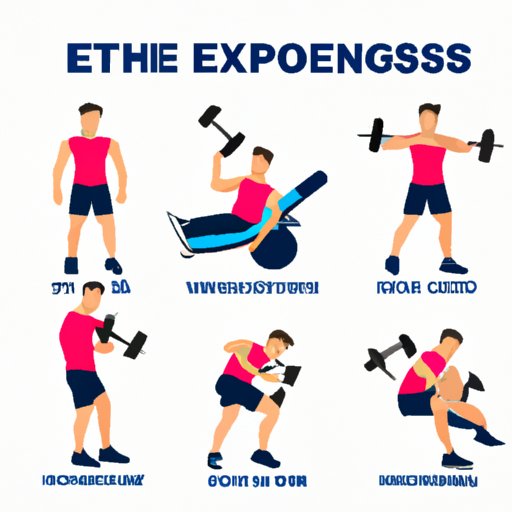
I. Introduction
If you’re looking for a way to build strength, increase flexibility, and prevent injuries, isotonic exercise may be just what you need. In this article, we’ll explore everything you need to know about isotonic exercise and why it should be a part of your fitness routine.
II. Isotonic Exercise 101: Everything You Need to Know
Isotonic exercise is a type of strength training exercise where the muscle length changes through a full range of motion, while the tension on the muscle remains constant. This type of exercise is designed to build strength, flexibility, and muscular endurance.
Isotonic exercise can be further divided into two categories: concentric and eccentric. Concentric exercise involves shortening the muscle as it contracts, while eccentric exercise involves lengthening the muscle as it contracts. Both types of isotonic exercise are important for building strength and preventing muscular imbalances.
It’s important to perform isotonic exercises with proper form and technique to prevent injury and ensure effectiveness. If you’re new to isotonic exercise, consider working with a qualified fitness professional who can guide you through proper form and technique.
III. Why Isotonic Exercise Should Be a Part of Your Fitness Routine
There are many benefits of isotonic exercise, including:
- Building strength and endurance
- Improving flexibility and range of motion
- Increasing bone density and reducing the risk of osteoporosis
- Improving cardiovascular health and reducing the risk of chronic diseases
- Preventing injuries by building strong, stable joints
Isotonic exercise can be a versatile addition to any fitness routine, whether you prefer high-intensity workouts or gentle stretching. It can be used as a standalone workout or combined with other types of exercise like cardio or isometric exercise.
IV. Isotonic vs. Isometric Exercise: What’s the Difference and Which is Better?
Isometric exercise is a type of strength training exercise where the muscle contracts without changing length, while maintaining constant tension. Isometric exercise is often used in physical therapy and rehabilitation, but can also be used as a standalone workout or combined with other types of exercise.
Isotonic and isometric exercise both offer unique benefits. Isotonic exercise is great for building strength and endurance, while isometric exercise is great for developing stability and improving joint health. Which type of exercise is better depends on your goals and individual circumstances. In general, a combination of isotonic and isometric exercise is ideal for building a strong, balanced body.
V. 10 Isotonic Exercises You Can Do Anywhere, Anytime
Isotonic exercises can be done with or without equipment. Here are ten exercises you can do anywhere, anytime:
- Squats
- Lunges
- Push-ups
- Dips
- Pull-ups
- Rows
- Planks
- Single-leg deadlifts
- Bicep curls
- Tricep extensions
Remember to use proper form and technique for each exercise to prevent injury and ensure effectiveness. You can also modify or progress each exercise to accommodate different fitness levels.
VI. The Benefits of Isotonic Exercise for Strength Building and Injury Prevention
Isotonic exercise is particularly effective for building strength and preventing injuries. By working through a full range of motion, isotonic exercise can help improve flexibility and balance, while reducing the risk of muscular imbalances and injuries.
To safely incorporate isotonic exercises into your fitness routine, start with light weights and focus on proper form and technique. Gradually increase the weight and intensity as your strength and endurance improve. Don’t forget to warm up before your workout and cool down afterwards to prevent injury and reduce soreness.
VII. Conclusion
Isotonic exercise is a powerful tool for building a strong, balanced body. Whether you’re a seasoned athlete or just starting your fitness journey, incorporating isotonic exercises into your routine can help you achieve your goals and prevent injuries.





